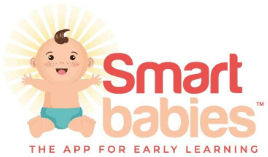WHAT TO DO BEFORE YOUR BABY IS BORN: CREATE AN ENRICHING ENVIRONMENT
 By Dr. S. H. Jacob
By Dr. S. H. Jacob
www.shjacob.io
Author, Your Baby’s Brain, Intellect, and You
Content Writer, SmartBabies App
New parents are not only excited about welcoming their baby to the family, but they are also anxious about what to expect. They want to provide the best they can for their baby so that she or he can have the care, love, and atmosphere to thrive. This isn’t an easy task. It is one full of fear of not doing the right thing in all the domains that parents must deal with, namely, the newborn’s physical, medical, nutritional, emotional, and cognitive needs. It’s quite overwhelming!
Over the years, I’ve devoted a larger part of my academic life to the topic of intellectual development. I am not a pediatrician. I am a psychologist who has focused on how humans learn and how knowledge originates, and how it evolves over time. I have also studied the effects of poor environments as well as optimal ones. Having said that, in this brief paper, I’d like to share some thoughts on the environment which is most optimal for your baby’s early learning and cognitive development.
The optimal approach is one in which an atmosphere of relaxed warmth, love, and caring prevail—where activities are enjoyed in a spirit of fun and guided play—where respect for the baby’s comfort is never compromised.
Perspective is Key
We are mentors, not zealots; we are providers of interesting, engaging interactions, not givers of ready-made knowledge; we are designers of play environments conducive to fun, discovery, and invention, not instructors of specific facts or skills. We must always stand guard against our desire to see our baby excel by keeping her state and interest as the focal point of our interactions. Finally, let’s remember that whatever we do must be done with the baby’s safety in mind.
ENRICHMENT: GENERAL GUIDELINES
An important place to start is perhaps knowing something about the abilities and limitations of your newborn. Please refer to my recently published book titled Your Baby’s Brain, Intellect, and You for more about what a newborn knows.
The limited, uncoordinated reflex and perceptual system with which your baby is born requires maturation (time) and experience (perceiving and interacting with people and objects) to become functional. How can you help enhance the process?
Here is a short list of what newborns are attracted to. Keep this in mind as you prepare your child’s living area.
Note: Newborns can only focus on objects that are seven to eight inches away from their faces.
- Newborns prefer to look at bold colors, not pastels.
- Newborns are drawn to bright colors.
- Newborns are drawn to contrastingly sharp patterns.
- Newborns are attracted to moving objects.
- Newborns prefer to look at human faces.
- Newborns prefer the primary caregiver’s voice.
- Newborns respond to human touch; they need to be held and embraced.
- Newborns crave human interaction (up to a point). If overstimulated, they will fall asleep).
Here are a few ideas:
- A crib bumper with good color contrasts
This is important for enriching eye movements, as well as for safety and protection.
- A black and white or black and yellow checkerboard blanket containing
twelve to sixteen squares with different shapes and figures in each square.
Babies’ attention is drawn to contrasting hues. So this kind of blanket or quilt will
be a source of interest for the baby. Use this blanket when you put the baby on her
stomach for a few minutes. This will strengthen back and neck muscles.
Babies prefer to look at human faces. So, why not use bed sheets, quilts, and bumpers that have large patterns of faces printed on them? Even if presented as abstract drawings, they will do just fine.
- Bold, contrastingly sharp patterns for baby’s crib sheet.
- A mobile
You can buy or make one. Either way, a mobile should have the baby in mind, not the adult. Most mobiles look interesting when we look at them at our eye level. But remember, your baby is on her back most of the time, getting a bottom view of the mobile. It should look interesting when viewed from the bottom as well as the side.
Some mobiles contain little motors to turn them steadily; others have music boxes that chime a simple melody. Whether you make or buy one, remember that boldness, contrast, contour, print, and angle of vision from the baby’s perspective are very important considerations.
There is certainly nothing wrong with a simple mobile at this stage. Decorate a paper plate with a black and white bull’s eye design, then suspend it from the ceiling with a ribbon. This will be adequate.
- A hand puppet
Since human faces are so interesting to babies, try to make or buy a puppet that has human features. On occasion, it’s fun to play with your baby while using a puppet. Remember, your baby’s head is disproportionately large in relation to the rest of her body, so when picking her up,
propping her up or carrying her, make sure that you provide support for her neck and the back of her head.
Note: Do not place an infant stomach down (or in any position) on a bean-bag cushion; the baby
may suffocate. Unfortunately, many have; these cushions are recognized to be extremely dangerous and completely inappropriate for use with infants.
- A ribbon or elastic tied across the crib rails
Like a mobile, this sort of “toy” can stimulate your baby to try to reach or kick the colorful, light objects dangling from the elastic band.
Baby will delight in looking at these objects as they move about. For visual variety, change the position of the toys and objects and periodically change them altogether. Be sure all objects are firmly attached to the elastic, and always choose soft, safe objects (light enough so that if they accidentally fall on the baby she won’t get hurt, yet large enough so they can’t be swallowed).
Make sure that the entire ribbon of objects is dangling at the right length (between seven to eight inches from the baby).
• Make a large banner using a solid color of felt or flannel
Cut out varying shapes and patterns from other colored swatches of material. Attach Velcro to the backs of these pieces and place them on the solid banner to create an interesting pattern or picture. Remember: this is the time to emphasize contours, patterns and contrasts.
- Touch baby’s cheeks.
At first, your baby will respond wildly when either cheek is touched. Later he will turn to whichever cheek is being stimulated. Does he respond differently when his cheek is rubbed rather than stroked gently? Stroking stimulates the searching reflex, triggering the drive to eat. Touch his cheek with the satin edge of a blanket, then with your skin, a sweater, a rattle, a rubber
ball. Your skin may set off the most searching as he begins to associate skin with the
nourishment and affection that often follow a touch. This enhances the baby’s early development of accommodation—fitting his behavior to the object he is in contact with.
- Touch your baby’s lips
Gently touch your fingers to your baby’s lips. Does he start to suck? As a variation, try brushing lips with a soft toy. Your baby is developing the ability to discriminate between fingers, toys, and so on. This activity also helps your baby to gain control over the sucking reflex. In Stage n,
the baby may start to lick rather than suck. This is a progression from simply sucking.
- Massage baby on a daily basis
This is highly recommended; it stimulates the baby’s muscles and makes them more responsive.
Massaging is a wonderful way to awaken a baby’s muscles when he wakes up from a nap.
The touching also builds a bond. Holding, touching, hugging, and massaging a baby are as
essential to a baby’s mind as they are to a baby’s emotional development. Do this every day
while talking, singing, or playing music.
- Common kitchen objects: plastic measuring spoons, cups
Occasionally you can put on a variety show. Simply show these objects to the baby for a minute or two while talking to her. Soon, after daily repetitions of this process, the baby starts reaching for familiar objects.
- Sitting position
Place a finger into each of her hands and gently pull her up to a sitting position for just a few moments.
You will notice that your baby’s arms and legs move when she gets excited and that when you place your finger in the palm of her hand, she will tend to grasp it. How strong her grip is during the first month of life! To nurture this reflex action, place soft objects and toys into her hand: a hand towel, a large wooden spoon, a rattle, or a large plastic ring. All of these objects,
which provide a variety of shapes, textures, and colors, can be used to encourage grasping and sucking reflexes.
- Talk, sing, and play soft music
Toward the end of the baby’s first month of life, she makes tiny throaty sounds and responds to human voices. But just because she can’t talk back or sing along does not mean that you shouldn’t talk or sing to her—lots. When you do, her vocal activity can increase and you are participating in the earliest beginning of language development! Since her sense of hearing is finely tuned, use your voice to soothe her when she is fussy.




